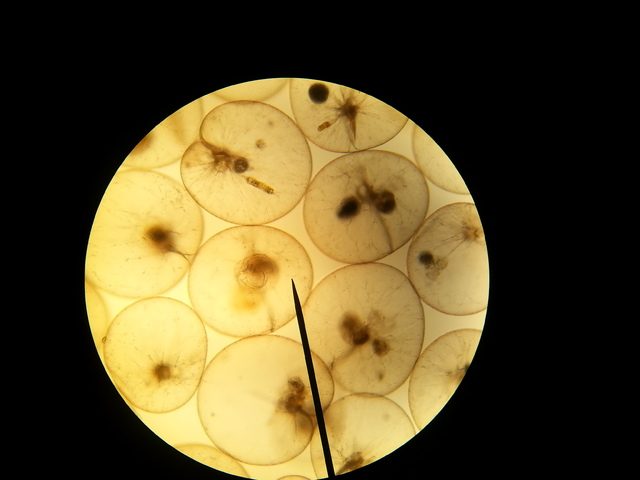Russel Barsh, for Kwiaht
That orange color in the water along some Eastsound shorelines is an unusually early-season algal bloom, but it is not toxic. The culprit is Noctiluca scintillans, a tiny scavenger that looks like a round clear plastic bag under the microscope. It is also responsible for “sea sparkle” on calm summer nights. Noctiluca is a dinoflagellate, a group of very fast-reproducing organisms that share some of the characteristics of animals and plants. Most of them can photosynthesize, but they also engulf and consume other plankton. They move quickly between the sunlit surface of the sea and darker depths by the motion of a whip-like “tail”, the flagellum. And while some dinoflagellates exude toxic chemical compounds in self-defense, which clams and other shellfish can concentrate making them dangerous to human consumers, Noctiluca is not one of them. It just looks scary.
Noctiluca contain small quantities of chlorophyll a, but the “tomato soup” color of a Noctiluca bloom appears to be due to other pigments that this organism uses as a kind of sunscreen, similar to the purple anthocyanins of many garden vegetables.
Larger, more frequent, more year-round algal blooms (toxic as well as non-toxic) are a symptom of warming oceans. They are also most likely to form in warm, shallow bays, especially near sources of extra nitrogen and phosphorus from gardens or farms.
Islanders interested in algal blooms can help Kwiaht, the Indian Island Marine Health Observatory, and the Orcas Island Phytoplankton Survey Team (SoundToxins) to locate, sample, and identify them. Follow the phytoplankton team on Facebook, or send an email to kwiaht@gmail.com to get involved!



